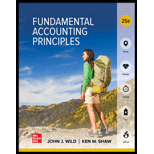
Sub Part-1
Bonds Issuance:
The Bonds issuance by the company is a source of long term financing and is issued at a discount or premium depending the prevailing market rate of interest and stated rate of interest on bonds. When the stated rate of interest is higher than the market rate of interest, then the investors will be ready to invest only in the situation when the bonds are issued at premium. This premium on bonds issue shall be treated as income by deducting the amortized portion from the cash interest paid to arrive at the interest expense of the period.
The Total amount of premium on bonds issuance.
Sub Part-2
Total interest expense over the life of bonds:
The total interest expense over the life off bonds can be computed by the adding up the all the amount paid over the lifetime of the bonds i.e. cash interest payment and maturity value of bonds and then the amount borrowed at the time of issuance of bonds shall be deducted from the above computed amount to arrive at the amount of total interest expense over the life of the bonds.
The Total interest expenses over the life of bonds.
Sub Part-3
Straight line Amortization of Premium:
The Straight line amortization of Premium is a technique of writing off the total discount over a period of bonds with an equal amount on each interest period. This equal amount can be computed by dividing the total amount of discount by the number of interest periods over a life of bonds.
Amortization table:
The amortization table under
The Preparation of amortization schedule.
Want to see the full answer?
Check out a sample textbook solution
Chapter 14 Solutions
FUND.ACCT.PRIN.
- Can you help me solve this accounting problem with the correct methodology?arrow_forwardEcho Industries uses a single raw material in its production process. The standard price for a unit of material is $2.25. During the month, the company purchased and used 820 units of this material at a price of $2.10 per unit. The standard quantity required per finished product is 4 units, and during the month, the company produced 205 finished units. How much was the material price variance?arrow_forwardCan you solve this general accounting problem using accurate calculation methods?arrow_forward
- subject = general accounting questionarrow_forwardAccounting?arrow_forwardFaith Industries purchased a crane for $78,000 on January 1, 2021. The crane has an expected salvage value of $6,000 and is expected to be used for 120,000 hours over its estimated useful life of 8 years. Actual usage was 13,800 hours in 2021 and 15,400 hours in 2022. Calculate depreciation expense per hour under the units-of-activity method. (Round the answer to 2 decimal places.)arrow_forward

 AccountingAccountingISBN:9781337272094Author:WARREN, Carl S., Reeve, James M., Duchac, Jonathan E.Publisher:Cengage Learning,
AccountingAccountingISBN:9781337272094Author:WARREN, Carl S., Reeve, James M., Duchac, Jonathan E.Publisher:Cengage Learning, Accounting Information SystemsAccountingISBN:9781337619202Author:Hall, James A.Publisher:Cengage Learning,
Accounting Information SystemsAccountingISBN:9781337619202Author:Hall, James A.Publisher:Cengage Learning, Horngren's Cost Accounting: A Managerial Emphasis...AccountingISBN:9780134475585Author:Srikant M. Datar, Madhav V. RajanPublisher:PEARSON
Horngren's Cost Accounting: A Managerial Emphasis...AccountingISBN:9780134475585Author:Srikant M. Datar, Madhav V. RajanPublisher:PEARSON Intermediate AccountingAccountingISBN:9781259722660Author:J. David Spiceland, Mark W. Nelson, Wayne M ThomasPublisher:McGraw-Hill Education
Intermediate AccountingAccountingISBN:9781259722660Author:J. David Spiceland, Mark W. Nelson, Wayne M ThomasPublisher:McGraw-Hill Education Financial and Managerial AccountingAccountingISBN:9781259726705Author:John J Wild, Ken W. Shaw, Barbara Chiappetta Fundamental Accounting PrinciplesPublisher:McGraw-Hill Education
Financial and Managerial AccountingAccountingISBN:9781259726705Author:John J Wild, Ken W. Shaw, Barbara Chiappetta Fundamental Accounting PrinciplesPublisher:McGraw-Hill Education





